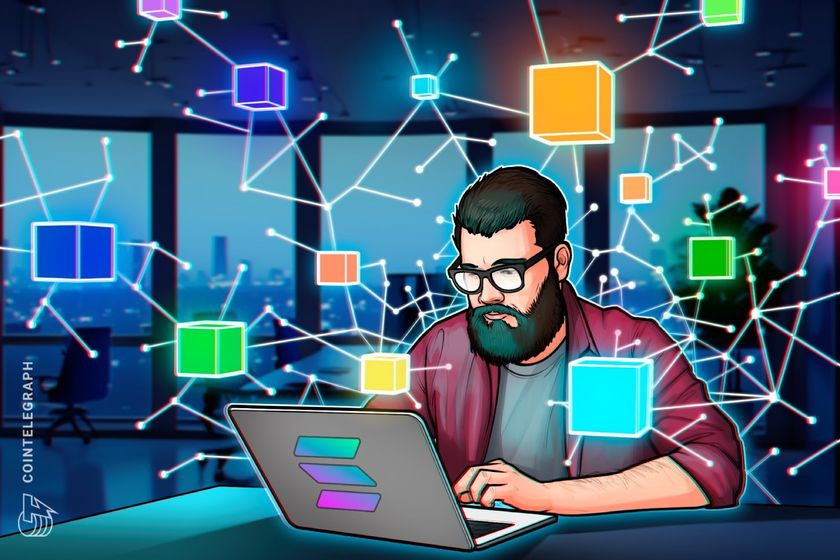based on materials from the website - By Cointelegraph

The next-generation client-validator from Solana, Firedancer, may not reach the full speed of the network for which it was designed, as technical limitations force developers to test it elsewhere.
One such developer is Douglas Kolkitt, a former high-frequency trader who is testing a hybrid validator configuration called Frankendancer on Fogo, a chain compatible with Solana, created to overcome the limitations currently hindering Firedancer from realizing its full potential on Solana.
Kolkitt, one of the founders of Fogo, stated that the new blockchain is not trying to replace Solana but is rejecting some of Solana's core assumptions, such as globally distributed validator sets, to demonstrate how great the potential of Firedancer is when speed is prioritized over decentralization.
The attempt to run Firedancer outside of Solana underscores a deeper divide in blockchain infrastructure: the contradiction between decentralization and speed. These two factors have long been compromises, but now more and more developers are favoring speed.
Jump Trading developed Firedancer, a high-performance validator client aimed at increasing Solana's throughput and reducing latency. However, according to Kolkitt, Solana's architecture imposes technical limitations that restrict Firedancer's speed in practice.
"If two clients are running in one network, you can only operate at the speed of the slowest client, otherwise the network risks stopping," he told Cointelegraph.
"It's like driving a Ferrari in city traffic — no matter how fast the car is, you're limited by the speed of the vehicles around you."
Currently, Solana supports two main implementations of the validator client: Agave and Firedancer. As of Friday, Agave operates on approximately 90% of validators. Meanwhile, Firedancer is still in a transitional stage called Frankendancer, a hybrid version of Agave and Firedancer. It accounts for about 10% of validators, compared to 7% in April.
The hybrid approach of Frankendancer allows for gradual implementation of improvements to Firedancer without jeopardizing the stability of the network.
The Solana network relies on a globally distributed set of validators. This geographical decentralization enhances security by preventing any one party or region from gaining excessive control. It also increases resilience against censorship and local failures or attacks.
This also means that decentralization entails trade-offs in terms of performance. Data and consensus messages must travel long distances, resulting in inevitable delays in the network. Even with optimized software like Frankendancer and the fastest hardware, Solana's block time remains around 400 milliseconds.
"Trading firms absolutely need something faster than 400 milliseconds. If you have events like announcements from the [Federal Reserve] or non-farm employment data, you need to be closer to that data to trade on it," Kolkitt said.
Solana is also working on reducing latency. On Thursday, the Solana Foundation unveiled a roadmap aimed at creating a "market for internet capital" by 2027, focused on controlling the order of transactions in smart contracts at the millisecond level.
Kolkitt links his entry into cryptocurrency with the "DeFi Summer." He worked on an automated market-making project on Ethereum and its new rollups.
"Ethereum chains were insufficient for what we wanted to do," Kolkitt said, explaining why he left the Ethereum ecosystem in search of alternatives better suited for high-frequency trading.
"We spent much more time on political games — which layer 2 to approach? How to get layer 2 support? — which distracted from developing core products."
According to Kolkitt, this fragmentation stifled innovation compared to the simplicity and unified liquidity of early Ethereum, which was more noticeable in Solana.
However, Solana is still relatively young. The first block was created in March 2020. Traditional financial institutions are slower to adopt new blockchain platforms like Solana, Kolkitt noted, adding that banks still prefer to operate mainly in ecosystems compatible with Ethereum.
Regarding demand, Kolkitt pointed to projects like Hyperliquid that are pushing the boundaries of the capabilities of the current blockchain infrastructure.
"Hyperliquid occupies over 90% of the decentralized perpetual options trading market," he noted. "But such ultra-low latency and high throughput do not work reliably on Solana today due to block formation time and network stability."
Next-generation low-latency networks like Fogo and Hyperliquid are pushing the boundaries to meet the speed requirements of modern trading. Projects like MegaETH also promise near-instant transactions targeted at emerging sectors like decentralized physical infrastructure that require real-time transaction execution.
What unites these blockchains is the willingness to make trade-offs, sacrificing decentralization for scalability. Fogo intentionally reduces the geographical distribution of validators to gain this speed advantage.
#MarketRebound , #Сryptomarketnews
Dear readers! Among you, there are many people who have enough time for independent monitoring of the information agenda of the crypto market and the world of finance.
Thus, by subscribing to "our news feed," those of you who find it much more convenient to read all the most interesting changes in the news agenda of the world of finance and cryptocurrencies in one group, rather than independently monitoring about twenty information sites and print publications (where we have already conducted this monitoring for you)!!! As they say, - "to each their own." 😀
Enjoy your viewing! Your reaction to the news you read is the best reward for us!!!
😉


